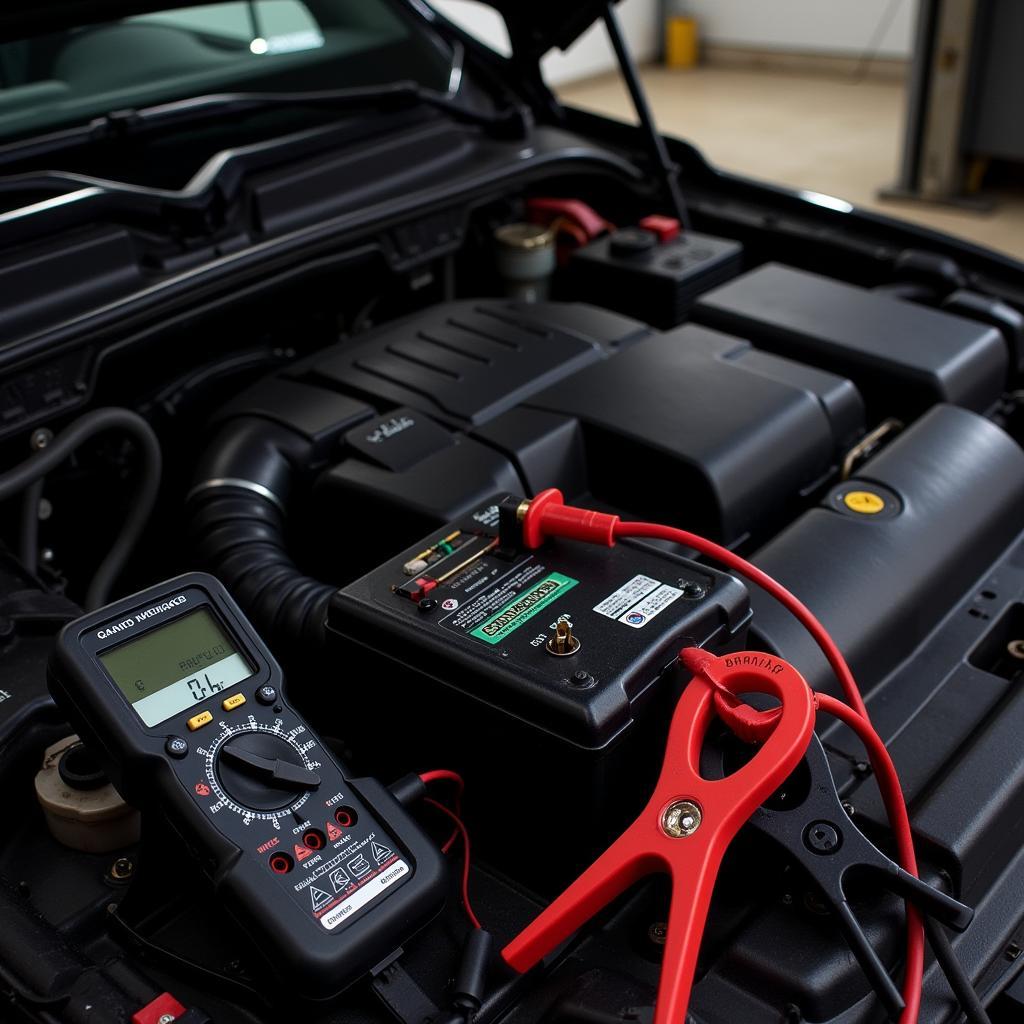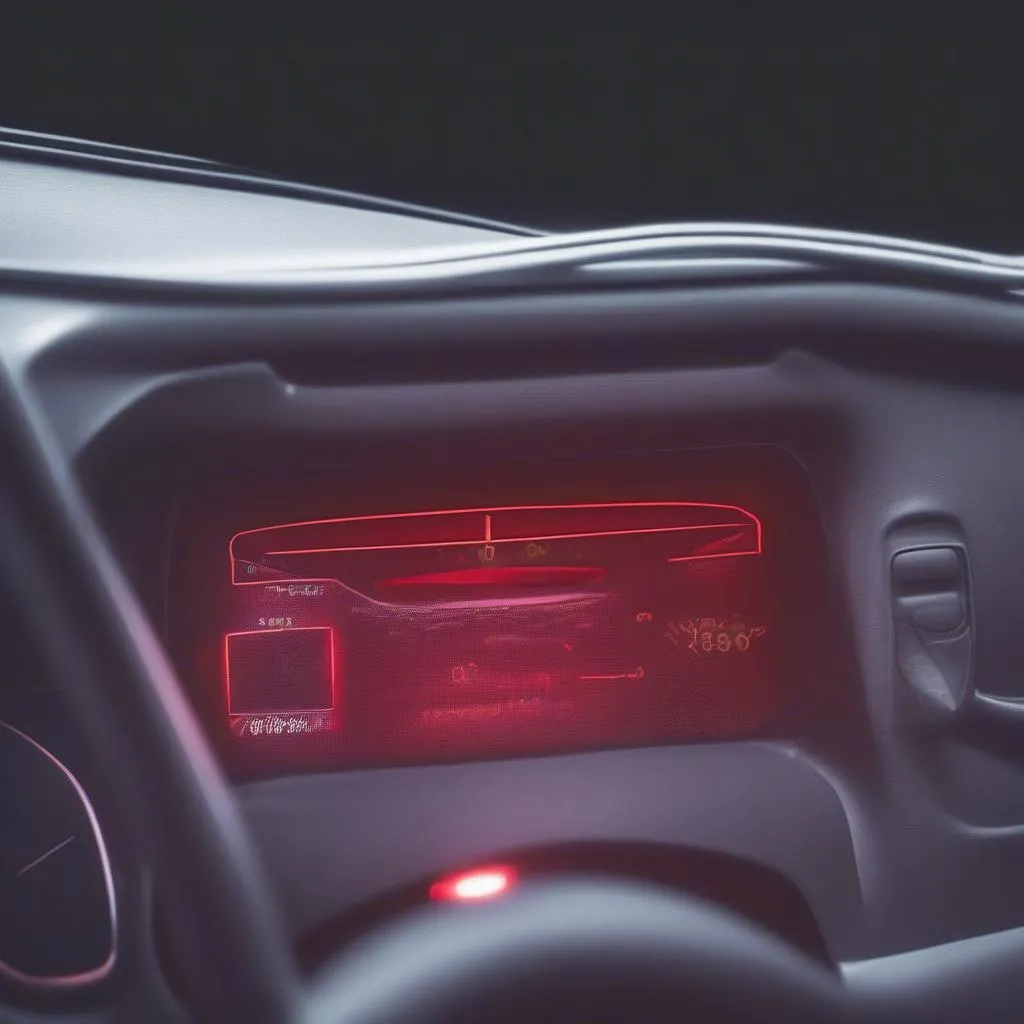A dead battery in your Jeep Grand Cherokee is frustrating, especially if it happens repeatedly. One of the most common culprits is a parasitic draw, a sneaky electrical drain that occurs even when the vehicle is off. This comprehensive guide will walk you through identifying, diagnosing, and resolving parasitic draw issues in your Jeep Grand Cherokee.
Understanding a parasitic draw is the first step to fixing it. A small amount of current is normal to maintain essential functions like the clock, radio presets, and security system. However, a parasitic draw goes beyond this normal range, slowly draining your battery over time. This can lead to starting problems, requiring jump-starts, and eventually a complete battery failure. Similar to jeep grand cherokee battery drain, this issue can affect various Jeep models.
Identifying a Parasitic Draw in Your Jeep Grand Cherokee
Several signs point towards a parasitic draw. Frequent jump-starts are a primary indicator. If your battery is relatively new and you still find yourself needing a jump, a parasitic draw is likely the cause. Dimming headlights, slow cranking, and electrical accessories malfunctioning can also suggest a draw on your battery. What causes a parasitic draw? Several components can be the culprit, from faulty interior lights and glove box lights to malfunctioning door lock actuators, stereo systems, and even after-market add-ons.
 Jeep Grand Cherokee with a Dead Battery Due to Parasitic Draw
Jeep Grand Cherokee with a Dead Battery Due to Parasitic Draw
Diagnosing the Parasitic Draw
To pinpoint the source of the drain, you’ll need a few tools: a digital multimeter, a test light, and potentially a wiring diagram for your specific Jeep Grand Cherokee model year. The process involves systematically disconnecting fuses and relays while monitoring the current draw with the multimeter.
- Prepare your Jeep: Park the vehicle, turn off the ignition, and close all doors and lights. Let the vehicle sit for at least 30 minutes to allow modules to go to sleep.
- Connect the multimeter: Set the multimeter to measure DC amps. Disconnect the negative battery cable and connect the multimeter in series between the negative cable and the negative battery terminal.
- Check the current draw: A normal draw should be around 25-50 milliamps. Anything significantly higher indicates a parasitic draw.
- Isolate the circuit: Begin removing fuses one at a time, checking the multimeter reading after each removal. When the current draw drops significantly, you’ve identified the circuit with the problem. This same process can be repeated with relays.
This detailed procedure will help you effectively pinpoint the problematic circuit causing the parasitic draw in your Jeep Grand Cherokee. It requires patience and attention to detail, but the results are well worth the effort. For more information about battery issues in specific models, check out 2016 jeep grand cherokee battery drain.
Fixing the Parasitic Draw
Once you’ve identified the problematic circuit, you can further pinpoint the specific component causing the issue. This may involve inspecting wiring for damage, testing individual components within the circuit, or consulting a wiring diagram. Common culprits include faulty switches, relays, and modules.
“A common mistake is assuming a bad battery is the problem,” says John Miller, a certified automotive electrician with over 20 years of experience. “A thorough parasitic draw test is essential to avoid unnecessary battery replacements.” Repairing the issue may involve replacing a faulty component, repairing damaged wiring, or reprogramming a malfunctioning module. Sometimes, the fix is as simple as replacing a blown fuse. However, if the draw is due to an aftermarket accessory, proper installation and configuration are crucial. Similar to signs of a bad car battery voltage, identifying the root cause of a parasitic draw requires careful diagnosis.
Conclusion
A parasitic draw can be a persistent problem in a Jeep Grand Cherokee, leading to frustration and unexpected breakdowns. By understanding the signs, diagnosing the issue methodically, and applying the correct fix, you can avoid the inconvenience and cost of repeated battery replacements. This guide provides the necessary steps to take control of your Jeep’s electrical system and ensure reliable starting every time. For information regarding the cost of fixing this issue, see parasitic battery drain fix cost. Addressing this problem promptly will prevent further damage and ensure the longevity of your vehicle’s electrical system. You may also want to investigate 2019 jeep cherokee battery issues for related information.


